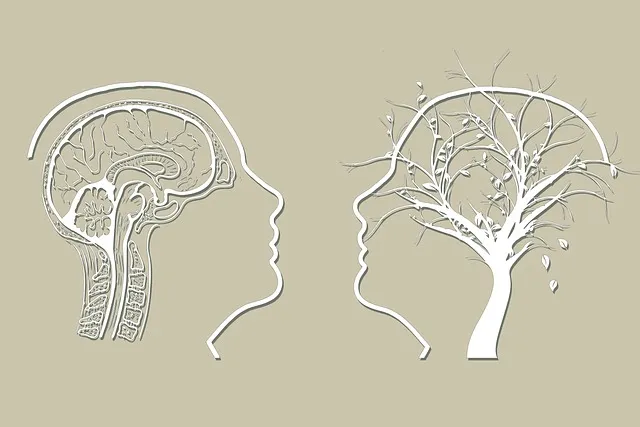Golden Kaiser Permanente (GKP) excels in addressing urban communities' unique mental health challenges by offering comprehensive coverage and innovative initiatives. By identifying gaps, GKP provides stress reduction workshops, awareness campaigns, and a podcast series to enhance mental wellness literacy. Their strategic approach includes removing financial barriers, investing in professional training, and building trust through cultural sensitivity. When designing outreach, understanding local needs is vital; programs should promote self-care, conflict resolution, and positive thinking while leveraging partnerships for holistic well-being. GKP's success lies in strategic planning, evaluation, and adaptability, ensuring long-term impact on mental health outcomes within the community.
Community outreach programs play a pivotal role in bridging the gap between healthcare services and underserved populations. This article explores how organizations like Kaiser Permanente are revolutionizing access to care, especially in mental health. We delve into understanding community needs, strategic program design, implementation logistics, and evaluation metrics for success. Discover how initiatives by Golden Kaiser Permanente enhance mental health coverage and foster inclusive communities.
- Understanding Community Needs: Identifying Gaps in Mental Health Services
- The Role of Kaiser Permanente in Expanding Access to Care
- Designing Effective Outreach Strategies: Engaging at-Risk Populations
- Implementing Program Logistics: From Planning to Execution
- Measuring Success and Ensuring Sustainability: Evaluation Metrics for Outreach Programs
Understanding Community Needs: Identifying Gaps in Mental Health Services

Understanding Community Needs is a pivotal step in designing effective Community Outreach Programs. When it comes to mental health services, identifying gaps in coverage and access is essential. Many communities face challenges in providing adequate support for individuals dealing with mental health issues, often due to limited resources or a lack of awareness. For instance, in urban areas like the bustling cities served by Golden Kaiser Permanente, while mental health coverage is available, there might be gaps in accessible services, especially for underserved populations. This could include difficulties in reaching those without insurance or those who face cultural barriers to care.
By recognizing these disparities, Community Outreach Program Implementation can focus on initiatives like Stress Reduction Methods through workshops and awareness campaigns, bridging the gap in mental wellness support. Moreover, leveraging tools such as the Mental Wellness Podcast Series Production can make information more accessible, especially to younger or tech-savvy demographics. These strategies aim to enhance mental health literacy and ensure that everyone within the community has access to resources tailored to their unique needs.
The Role of Kaiser Permanente in Expanding Access to Care

Golden Kaiser Permanente stands as a beacon of hope in expanding access to care, particularly in mental health services. With its comprehensive coverage and dedicated initiatives, it’s transforming lives across communities. The organization recognizes that addressing mental well-being is paramount for overall community health, and thus, they’ve strategically integrated mental health coverage into their healthcare plans. This approach ensures that individuals from diverse backgrounds can access the necessary support without financial barriers.
Beyond providing insurance, Kaiser Permanente invests in innovative programs. These initiatives include training sessions focused on conflict resolution techniques and communication strategies for mental health professionals. By equipping these specialists with effective tools, they enhance their ability to manage complex cases and foster healthier patient-provider relationships. This holistic approach, combining robust coverage with specialized support, reflects the organization’s commitment to a comprehensive risk assessment strategy, ultimately leading to improved mental health outcomes.
Designing Effective Outreach Strategies: Engaging at-Risk Populations

When designing effective outreach strategies, especially for engaging at-risk populations, it’s crucial to understand and cater to their unique needs and challenges. Community outreach programs should aim to bridge the gap between services and those who might be hesitant or unaware of available support, such as individuals facing mental health issues or lacking access to quality care like Golden Kaiser Permanente mental health coverage.
One strategy is to foster trust through cultural sensitivity and community partnerships. Incorporating initiatives that promote positive thinking and self-care practices can encourage participation and build relationships. Additionally, teaching conflict resolution techniques within these programs can address underlying social issues while providing individuals with valuable skills to navigate challenging situations.
Implementing Program Logistics: From Planning to Execution

Implementing a community outreach program involves meticulous planning and strategic execution, especially in healthcare sectors aiming to promote emotional well-being. Organizations like Kaiser Permanente recognize the importance of such initiatives for the holistic health of their communities, as highlighted by their comprehensive mental health coverage plans. The first step is to assess local needs through public awareness campaigns development, tailoring services to address specific issues. This involves engaging with community leaders and stakeholders to understand cultural nuances and barriers to access.
Once needs are identified, logistical details must be carefully managed. This includes scheduling events or sessions, selecting suitable venues, and ensuring the availability of necessary resources. For instance, implementing Burnout Prevention Strategies for Healthcare Providers might involve arranging workshops or seminars with experts in the field. Effective communication is key; keeping participants informed about dates, times, and any prerequisites ensures higher attendance and engagement. Successful execution requires adaptability, addressing unforeseen challenges promptly, and leveraging partnerships to amplify impact.
Measuring Success and Ensuring Sustainability: Evaluation Metrics for Outreach Programs

Measuring success and ensuring sustainability are paramount when implementing community outreach programs, especially those focusing on mental health initiatives like Golden Kaiser Permanente’s coverage. Key evaluation metrics should go beyond simple attendance or satisfaction rates to assess meaningful impact. This could include tracking improvements in emotional regulation, burnout prevention, and self-care routine development among participants over time. By setting clear goals and regularly collecting data through surveys, interviews, or observational assessments, program organizers can identify areas of success and areas needing improvement.
Sustainable outreach programs also require a strategic approach to resource allocation and community engagement. This involves building strong partnerships with local organizations, leveraging existing infrastructure, and fostering ongoing dialogue with the communities served. Regular evaluation ensures that programs remain responsive to evolving needs, maintaining their relevance and effectiveness in promoting mental well-being within the community over the long term.
Community outreach programs, as demonstrated by initiatives from organizations like Golden Kaiser Permanente, play a pivotal role in addressing the pressing mental health needs of underserved populations. By understanding community gaps, leveraging resources such as expanded mental health coverage through Kaiser’s innovative models, and implementing strategic engagement, these programs can significantly enhance access to care. Effective logistics planning and evaluation metrics ensure sustainability, fostering a healthier and more resilient community for all.



